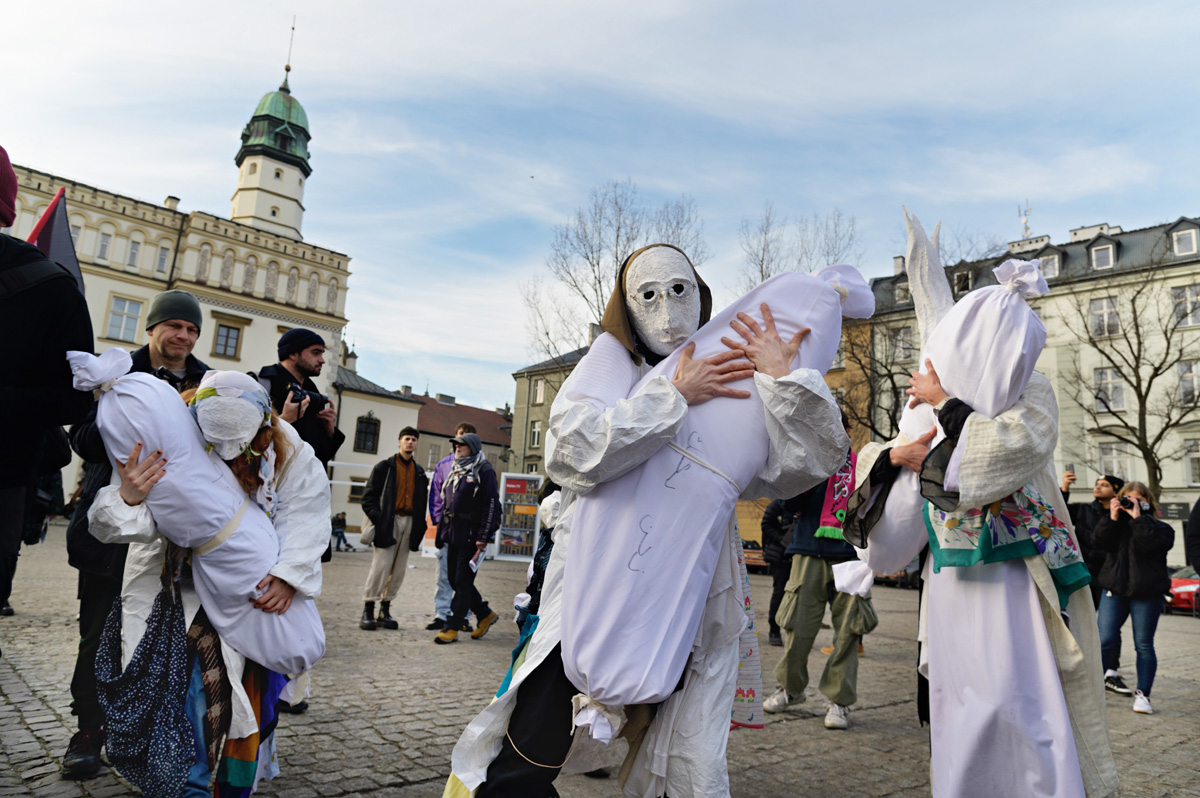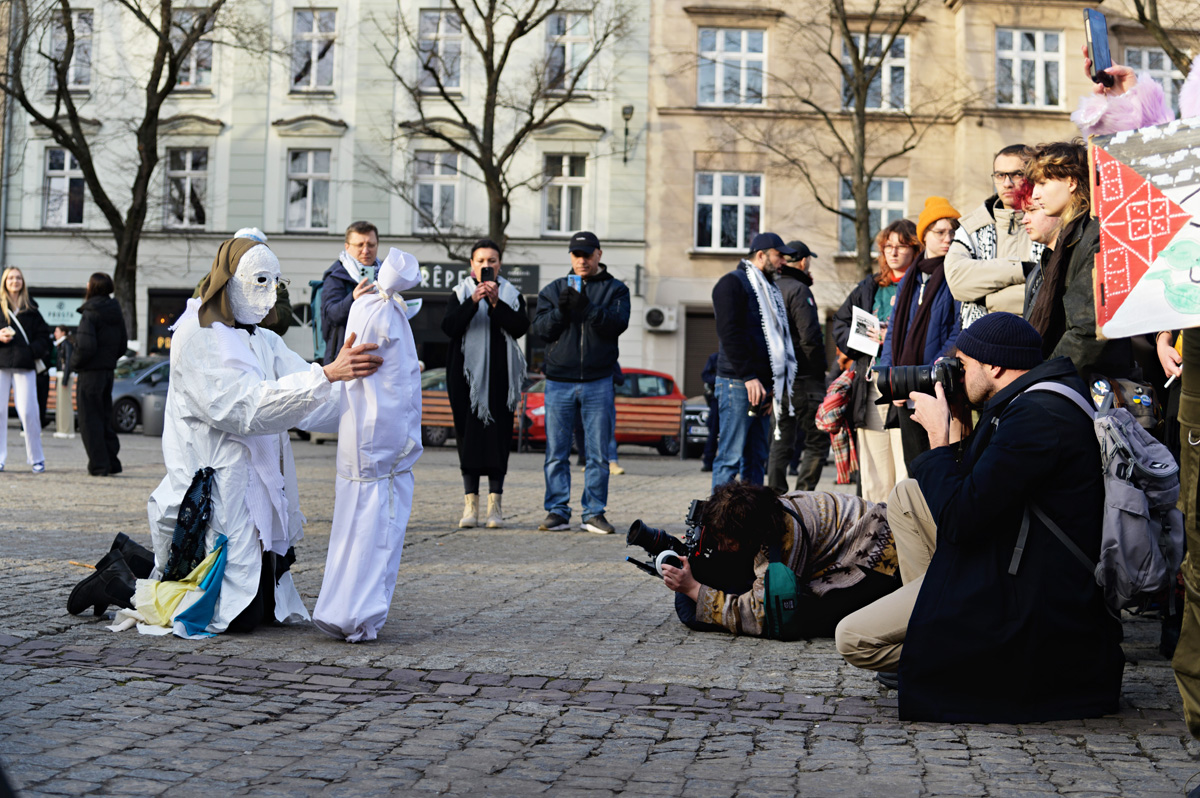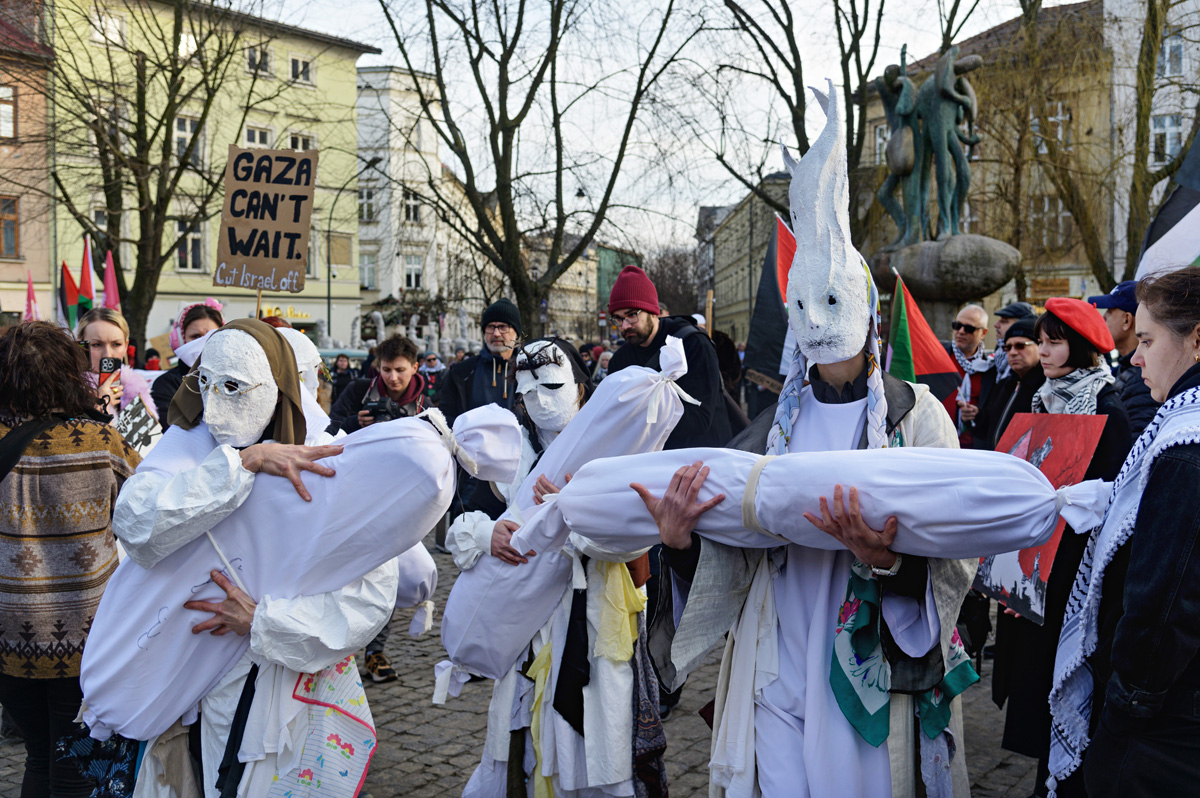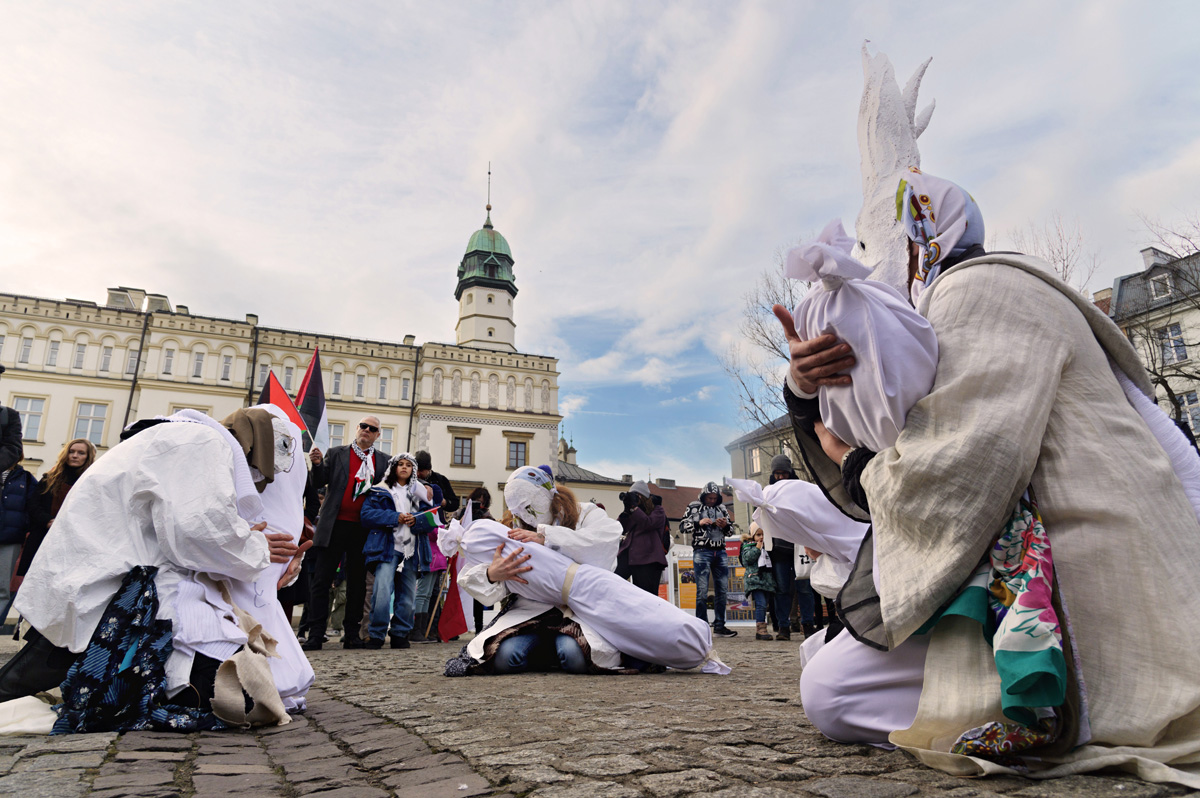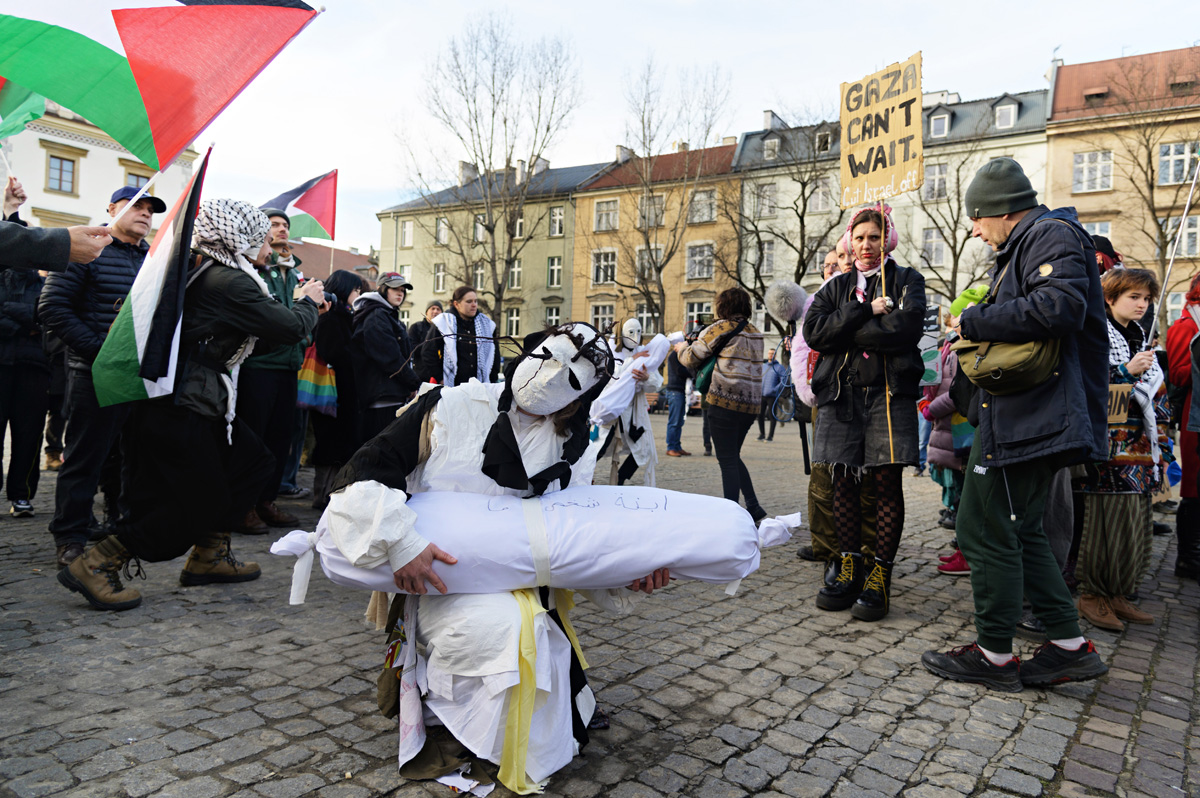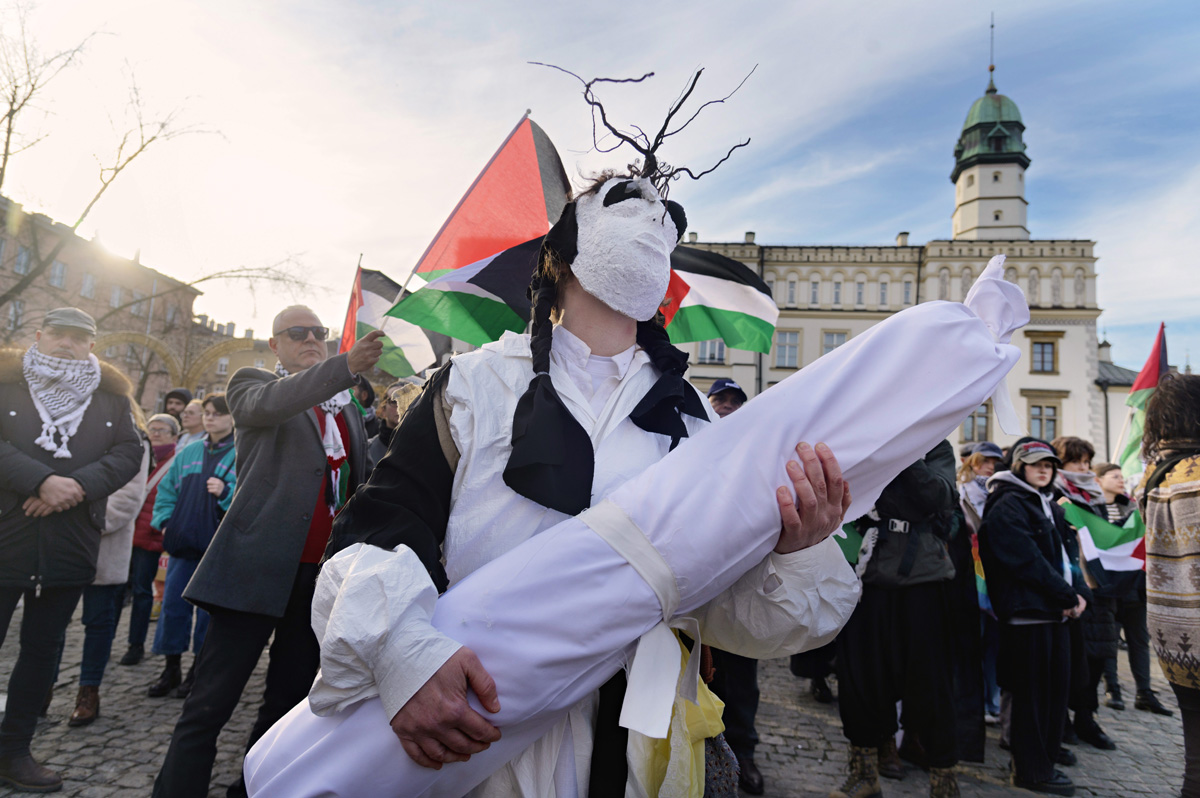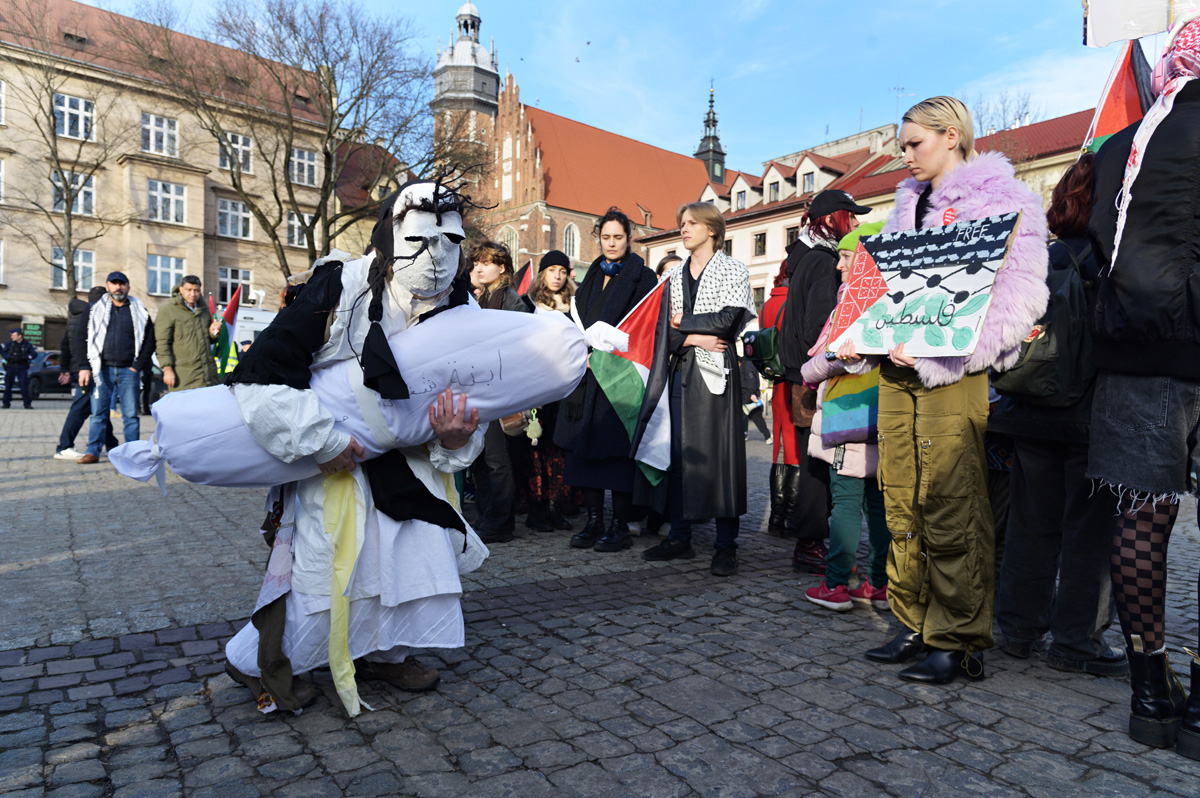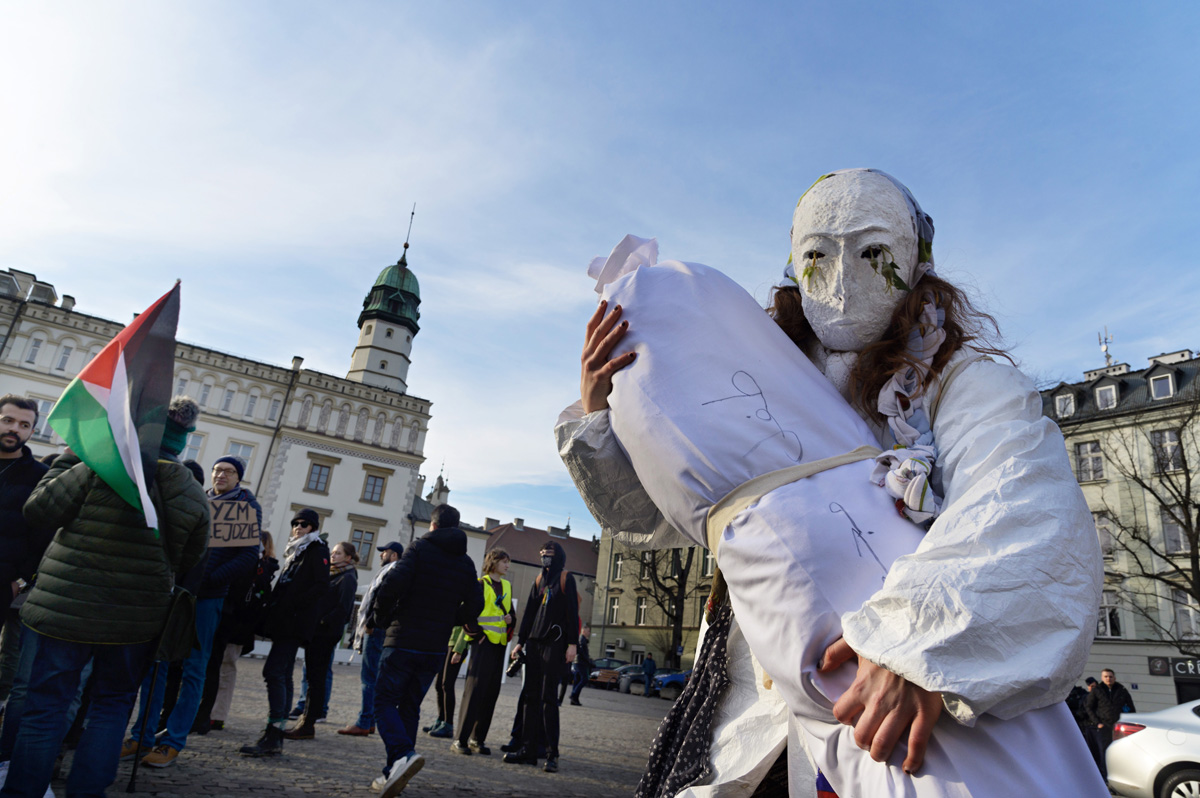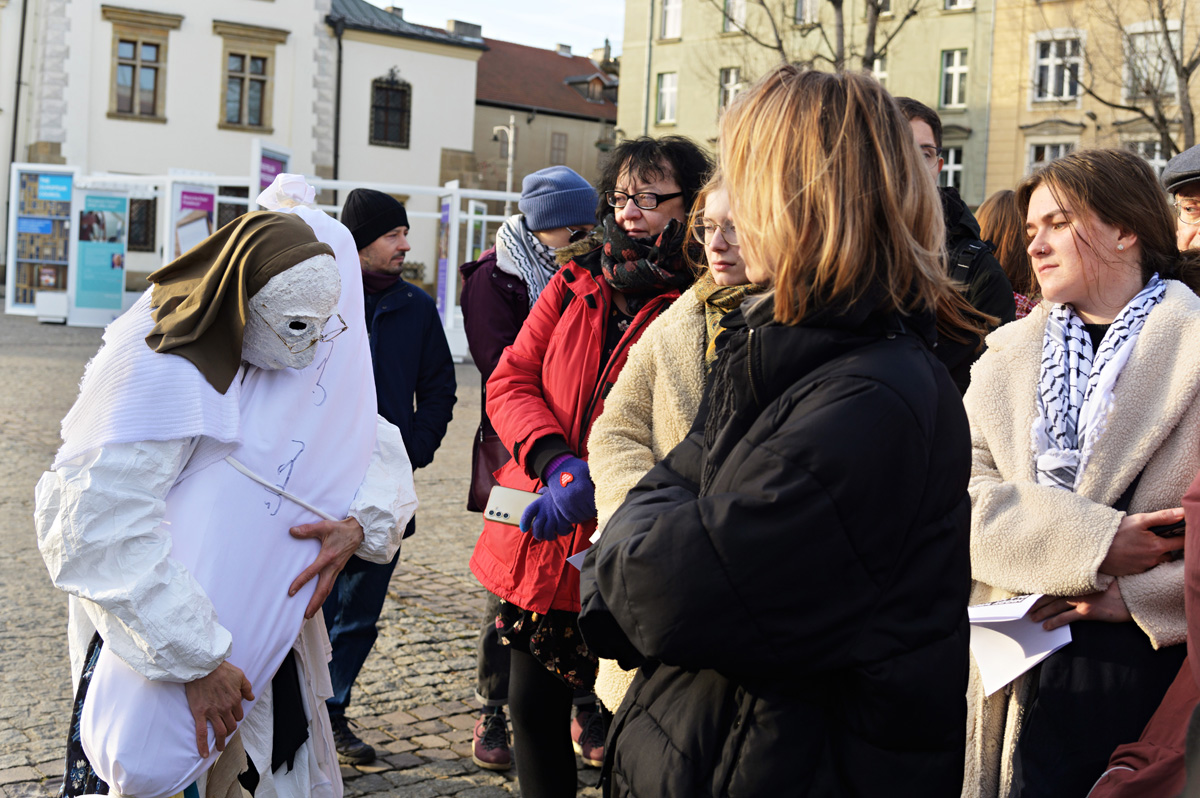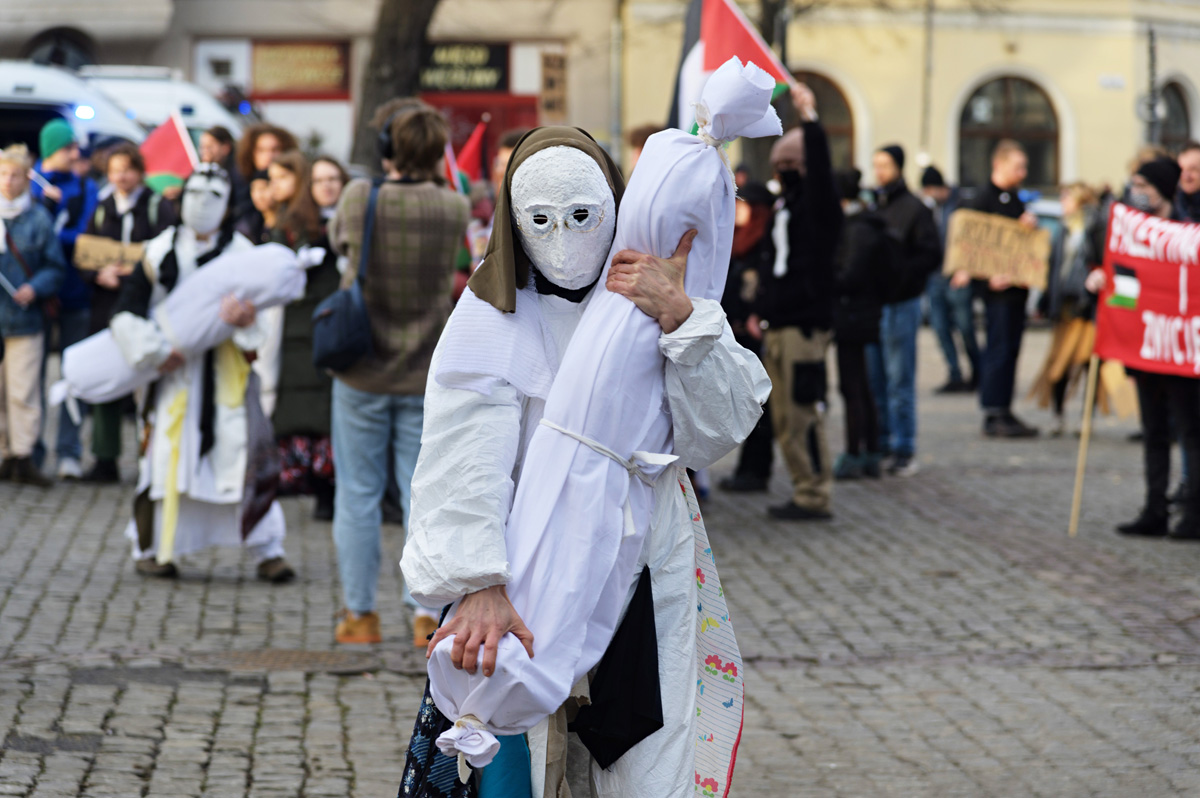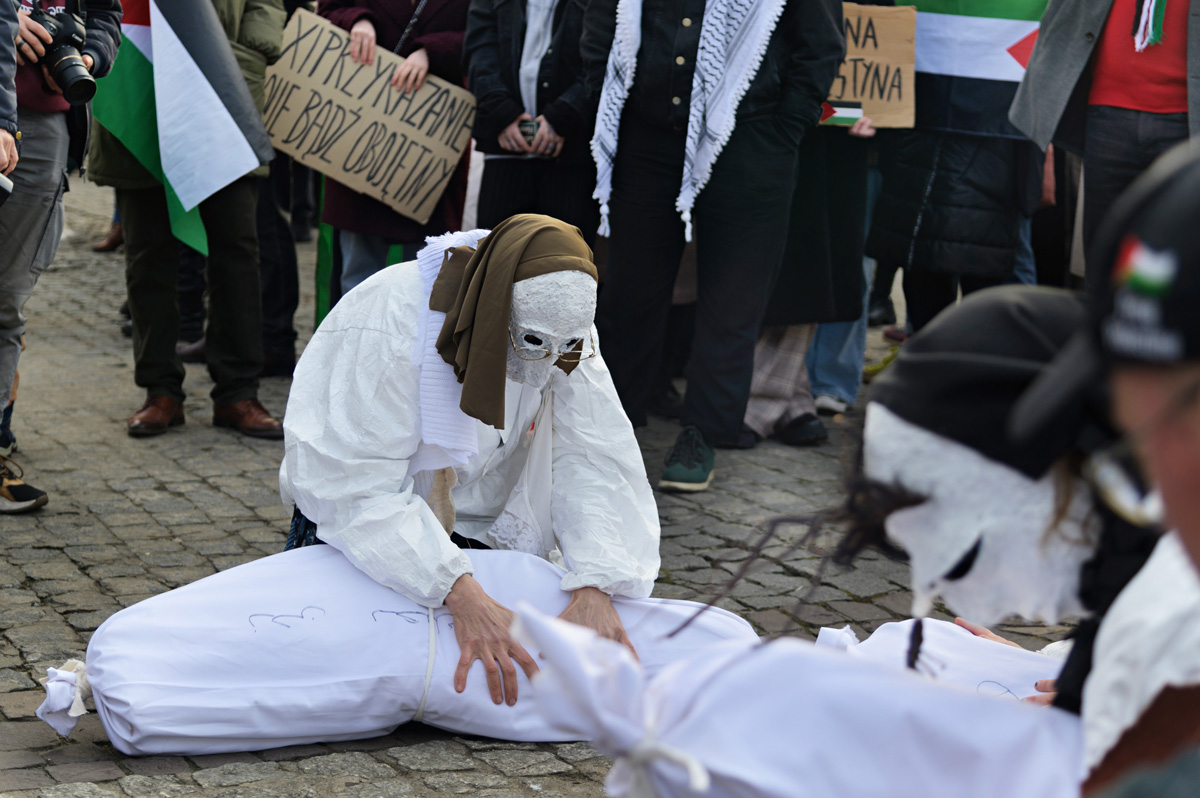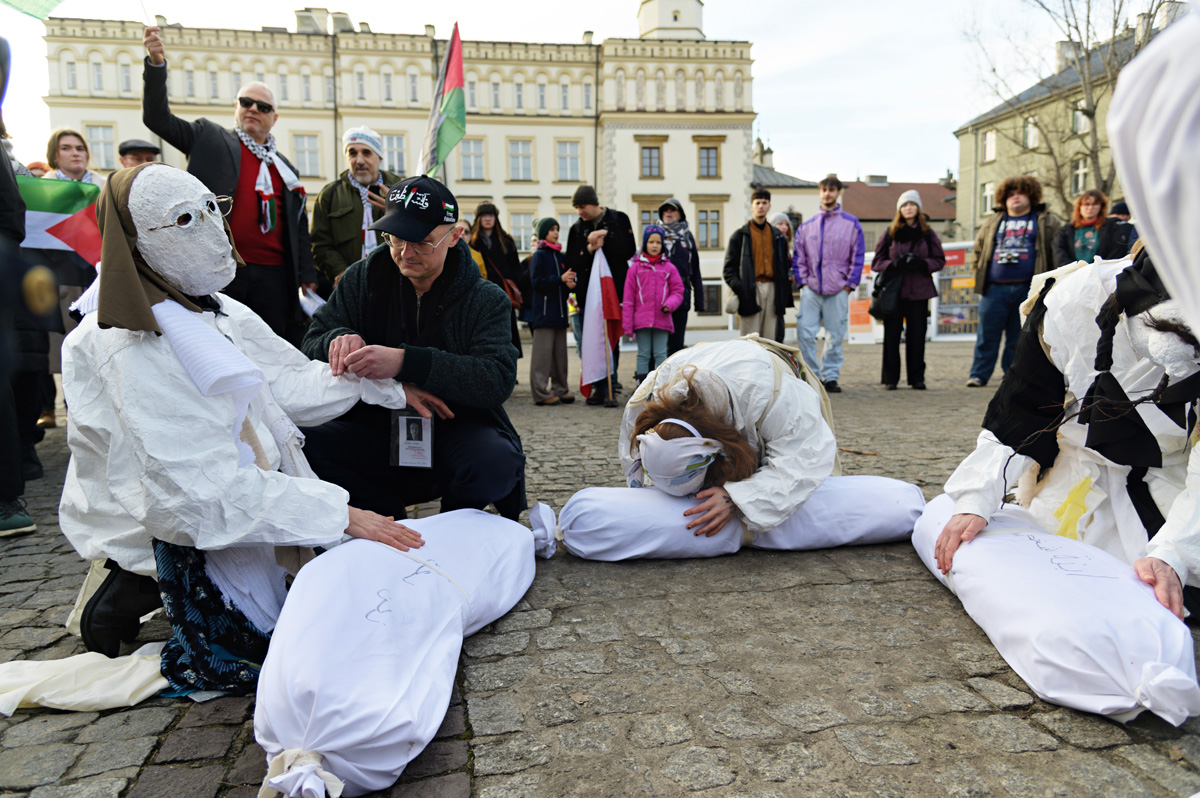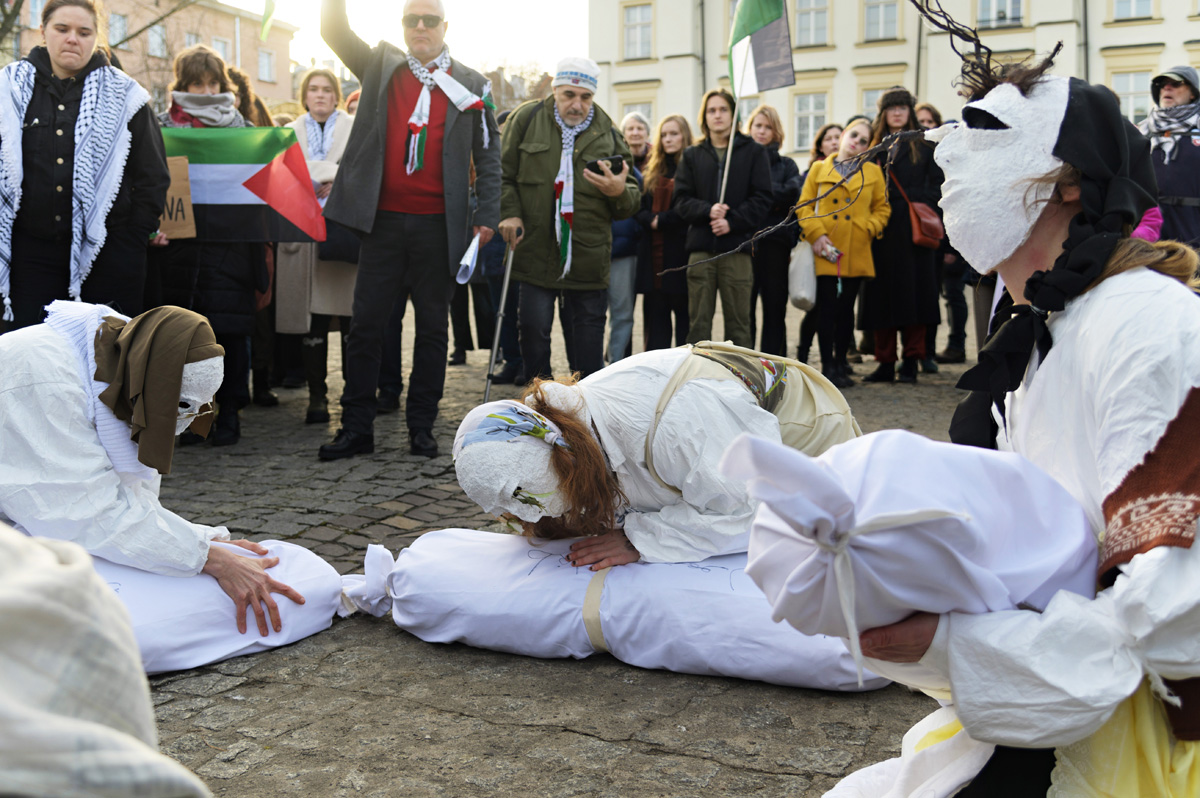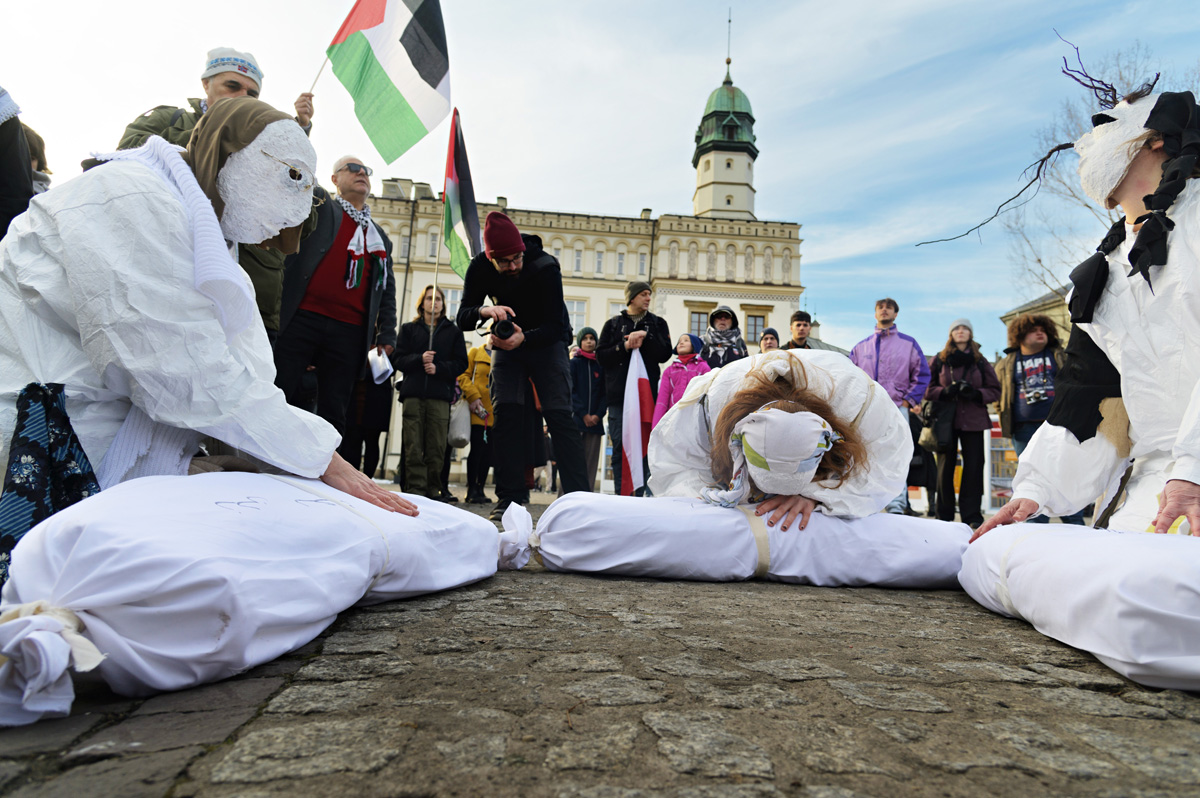דיבוקים i شهداء / DYBBUKS AND MARTYRS
2025,
Performance by Robert Sniderman, Julie Weitz and Joanna Rajkowska
Plac Wolnica, Kraków
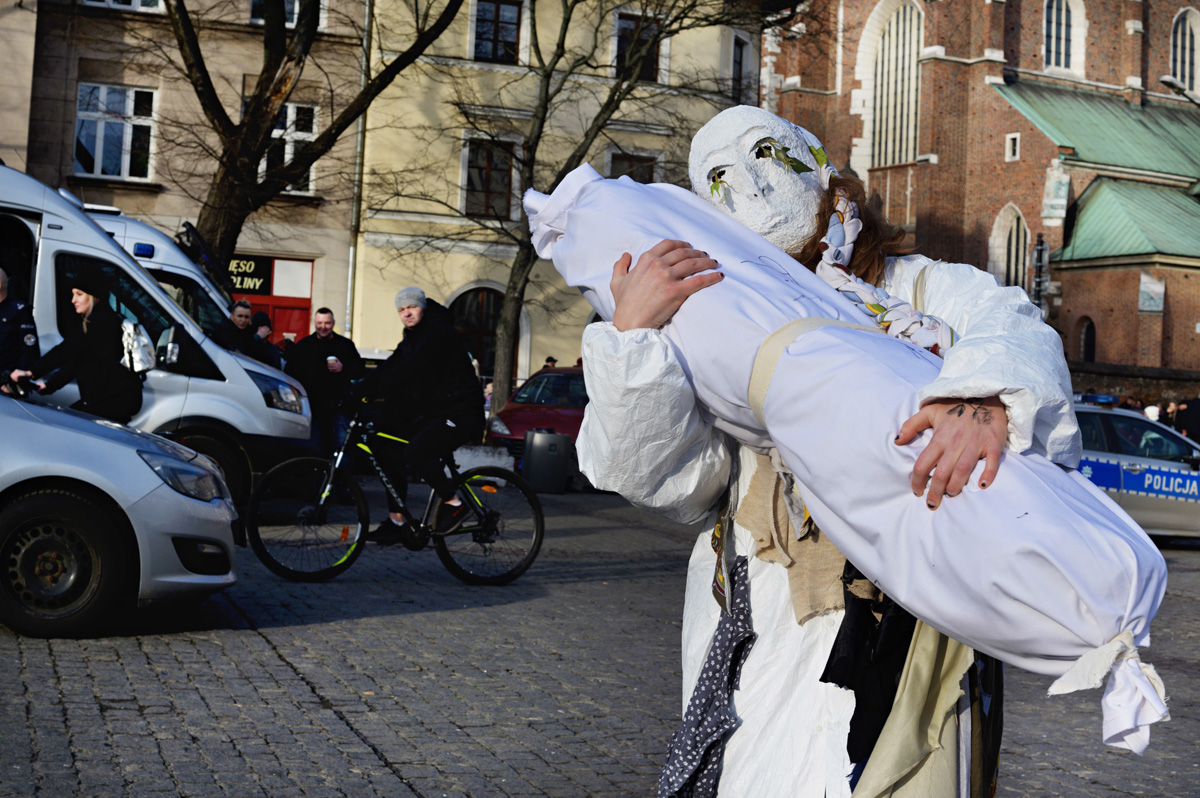
Text: Robert Yerachmiel Sniderman
In Kraków’s Plac Wolnica , شهداء i דיבוקים (Dybuki i męczennicy/Dybbuks and Martyrs) initiated the “Never Again for Anyone” demonstration through a contemplative transcultural action that performed Dybukkim (wandering Jewish spirits) carrying Gaza’s Shuhada (martyrs).
A circle of artists and activists—including Joanna Rajkowska, Julie Weitz, Robert Yerachmiel Sniderman, Jadwiga Wilno, Natalia Kwiatkowska, Andrew Dixon and Alina Palichleb—created the performance as a restorative and symbolically resounding intervention during this moment of intense grief.
As demonstrators arrived and settled in the Plac Wolnica to mourn all our martyrs, they saw dybbukim (possessing spirits) carry the martyrs of Gaza. The martyr is mourned, is a symbol of undying resisitance, undying meaning, undying witness. The martyr’s death is vital contribution to life.
The dybbuk’s deathly presence is feared and misunderstood as evil and nefarious. The dybbuk inhabits the living because their relation to one another is unresolved and volatile.
When the dybbukim carry the martyrs, they take it upon themselves to bear out from this position of their lost and volatile inhabitations to help move these new ones, these witnesses (martyr means witness in Hebrew and Arabic), to where they need to go because it is the same place the dybbuks need to go.
To understand the course of action by the participants of the demonstration, the narrators read the following text:
Today, we commemorate the murder of millions of Jews and the near-absolute erasure of European Jewish life by the Nazis and their collaborators 80 years ago. We grieve, still, too, for the hundreds of thousands of Palestinians murdered and disappeared andin the near-absolute erasure of Gaza by Israeli forces.
Today, we embody the deep interconnections between two acts of genocide: one that occurred here, in Nazi-occupied Poland over 80 years ago, whereto Jews from all over Europe were deported to their incarcerated destruction, and one that continues today in Palestine. These realities are intertwined.
Today, we hold each other in grief. Today, we honor all our martyrs, our Shuhada. Today, we commit to mutual dignity, safety and belonging.
Do you see them? Dybbukim are carrying our Shuhada.
In Yiddish culture, as in many others, the Dybbuk is a restless soul—a spirit that possesses the living. Dybbukim are often misunderstood, feared as evil. But Dybbukim inhabit the living because they need us. They carry unresolved grief, violence, and pain from our ancestors and predecessors, asking us to confront the profound absence that was left behind.The Dybbukim haunt us because they yearn and grope for resolution in the present.
In Palestinian culture, as in many others, the Martyr, the Shahid, being also the violated dead, holds a different meaning. Martyrs, Shuhada, are symbols of undying resistance and vessels of eternal witness. A Martyr’s death is at once the unjustified end of a life on earth and a vital contribution to the liberation of life on earth. The Shahid upends the oppressor’s system of domination, reminding us of a greater justice beyond and freedom as constant struggle.
When the Dybbukim carry Shuhadah, they shoulder the violent legacies of this part of the earth, where we all today stand, to accompany these new eternal witnesses to where they must go. Because where Shuhahdah go is the same place Dybbukim seek: true reckoning, actual resolution, where our futures are freed from these cycles of violence.
We are haunted by the grief and violence of our ancestors, brethren, neighbors. But this haunting compels us to act. To witness. To resist.
We ask you to wear the torn fabric of gauze.
The word “gaza” is believed to originate from the place name of Gaza, an ancient pluri-ethnic center for weaving, especially silk. As early as the 13th century, Gaza exported intricately woven silk fabric to much of the world. Gauze has long been associated with healing. And now, more than ever, we need gauze to heal. We need Gaza to heal.
Yet, the Israeli regime has prevented basic humanitarian aid—gauze, medicine, food, and water—from reaching Gaza. These conditions mirror the ghettos where Jews were once confined across Poland before being sent to Nazi death camps. These sites of death lie in our very backyards and we know the lasting horrors they impose on future generations.
In Jewish tradition, mourners tear their clothing as a ritual of grief when a loved one dies. This act of tearing—kriah—is a raw expression of pain, sorrow, and heartbreak. Today, we extend this act of mourning to encompass all the lives lost. Our hearts are torn by the violence, by the relentless cycles of death and destruction.
By wearing this gauze, this torn fabric, we embody both grief and solidarity. We mourn with the dead, and we stand with the living. Let these symbols remind us of the interconnectedness of our pain, our resistance, and our shared hope for healing.
Let us walk, listen, and speak together today, carrying the memory of the Shuhada and the yearning of the Dybbukim. Let us commit to ending these cycles, here and now.
